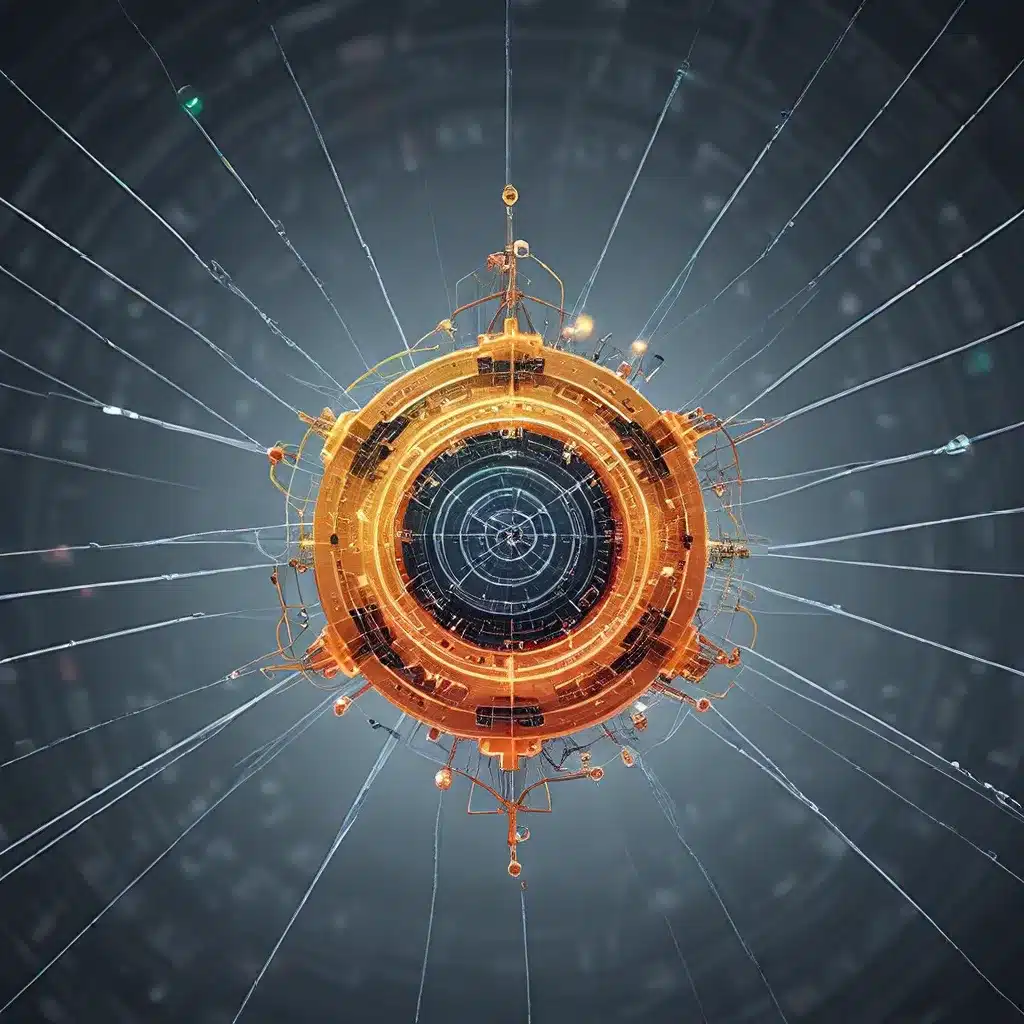
In the rapidly evolving landscape of sensor networks and the Internet of Things (IoT), the integration of distributed algorithms has emerged as a transformative force, unlocking new possibilities and optimizing system performance. As these technologies continue to shape the future, it is crucial to understand the advancements, challenges, and applications that are redefining the way we interact with and leverage the sensor ecosystem.
The Rise of Sensor Synergy: Collaborative Intelligence
The rise of sensor networks and IoT has ushered in an era of unprecedented data collection and analysis, empowering us to gain unprecedented insights into our environments, processes, and behaviors. However, the sheer volume and complexity of sensor data have necessitated the development of innovative distributed algorithms that can harness the collective intelligence of these interconnected systems.
One of the most promising advancements in this field is the drone swarm technology, which leverages the collaborative nature of multiple unmanned aerial vehicles (UAVs) to tackle complex tasks with remarkable efficiency and resilience. By operating as a coordinated swarm, these micro-drones can overcome the limitations of individual units, enabling them to navigate challenging environments, gather comprehensive data, and execute intricate missions with a high degree of adaptability and autonomy.
Navigating the Complexities of Drone Swarm Coordination
The coordination and control of drone swarms pose unique challenges that researchers and engineers are actively addressing. These challenges include:
-
Communication and Networking: Ensuring seamless communication and networking among the swarm members is crucial for effective coordination and information sharing. Researchers are exploring advanced communication protocols, such as ad-hoc networking technologies and mesh networks, to enable real-time data exchange and decision-making.
-
Collision Avoidance: As the size of drone swarms increases, the risk of collisions also rises. Implementing robust collision avoidance mechanisms that leverage sensors, computer vision, and AI algorithms is essential for maintaining the safety and integrity of the swarm.
-
Scalability and Control: Scaling up drone swarm operations to handle hundreds or even thousands of drones simultaneously introduces complexities in management and control. Researchers are investigating scalable systems and distributed control algorithms to efficiently manage these large-scale swarm operations.
-
Power Management: Ensuring sustained flight and mission success of drone swarms requires careful power management. Optimizing battery technologies, energy consumption, and exploring renewable energy sources are crucial areas of focus.
Unleashing the Potential: Distributed Algorithms and Swarm Intelligence
The integration of distributed algorithms and swarm intelligence has unlocked new frontiers in the capabilities of sensor networks and IoT applications. This powerful combination enables drone swarms to exhibit autonomous decision-making, adaptive behaviors, and self-organization – traits inspired by the collective intelligence observed in natural systems like bee colonies or bird flocks.
-
Task Allocation and Route Planning: Distributed algorithms are employed to address the task allocation and route planning challenges faced by drone swarms. These algorithms optimize resource consumption, maximize benefits, and ensure the shortest possible flight paths.
-
Swarm Maneuvering and Navigation: Drone swarms utilize a range of navigation techniques, including global navigation satellites (GNSS), inertial navigation, and image-based scene matching, to strategically maneuver and reach their targets. The collaborative nature of the swarm enhances resilience against potential disruptions, such as GPS jamming.
-
Integration with AI, Big Data, and IoT: Advancements in Artificial Intelligence (AI), Big Data, and the Internet of Things (IoT) have significantly enhanced the capabilities of drone swarm systems. AI algorithms enable drones to emulate collaborative behaviors, while edge computing and sensor fusion techniques improve real-time decision-making and environmental perception.
Securing the Sensor Ecosystem: Addressing Vulnerabilities
As sensor networks and IoT devices become increasingly ubiquitous, the importance of security and data integrity cannot be overstated. Researchers are exploring innovative solutions, such as blockchain technology, to address the security challenges inherent in large-scale drone operations.
By leveraging decentralized and secure communication protocols, drone swarms can enhance trust and prevent unauthorized access, ensuring the integrity of their operations and the data they collect. This blockchain-based approach represents a significant step forward in safeguarding the sensor ecosystem against emerging threats.
Powering the Future: Energy-Efficient Sensor Designs
The energy management of sensor networks and IoT devices is a critical consideration, as these systems often operate in remote or inaccessible locations, relying on limited power sources. Researchers are addressing this challenge through the development of energy-efficient sensor designs and power management strategies.
One promising solution is the integration of renewable energy sources, such as solar panels or energy harvesting technologies, which can extend the operational lifetime of sensor nodes and drone swarms. Additionally, optimization algorithms and hardware-software co-design approaches are being explored to minimize energy consumption while maintaining the performance and reliability of sensor networks.
Realizing the Sensor Network Utopia
The advancements in distributed algorithms, swarm intelligence, security, and energy management are paving the way for a future where sensor networks and IoT technologies seamlessly integrate to create a smart, interconnected world. By harnessing the collective intelligence of sensor ecosystems, we can unlock unprecedented insights, optimize processes, and enhance the quality of life across a wide range of industries and applications.
As we continue to push the boundaries of these technologies, the sensor networks community remains committed to fostering innovation, addressing challenges, and building a future where the power of sensor synergy transforms our lives in remarkable ways.